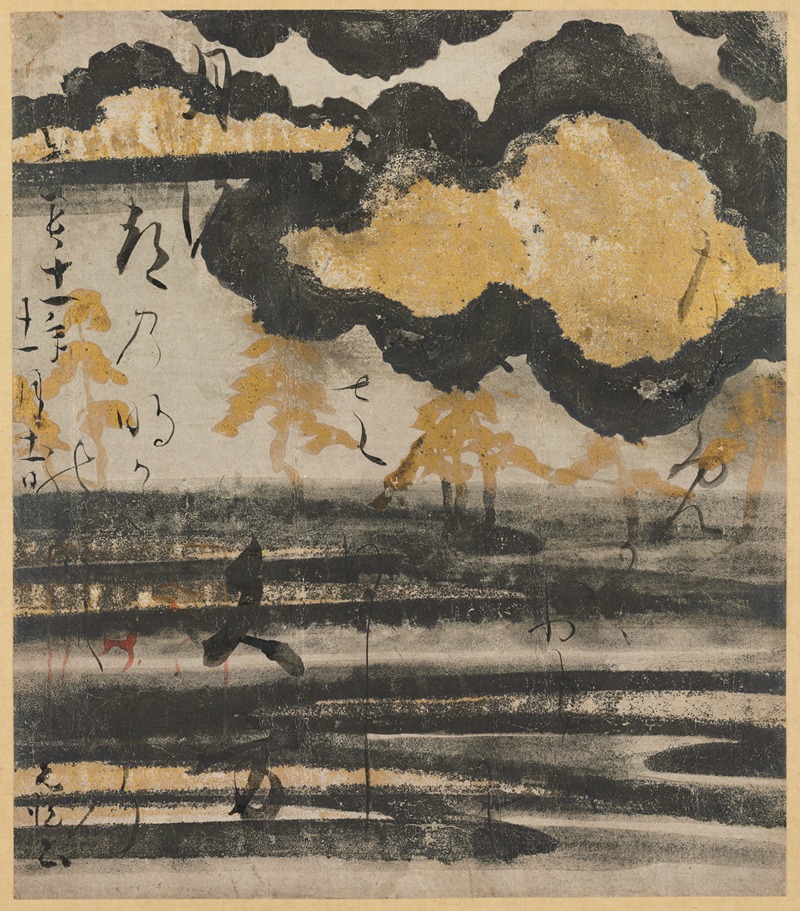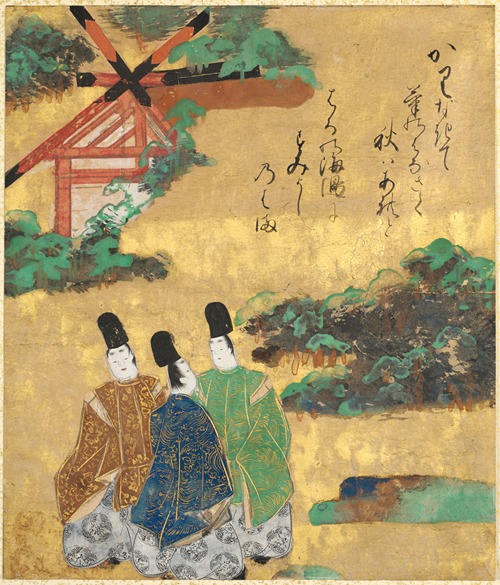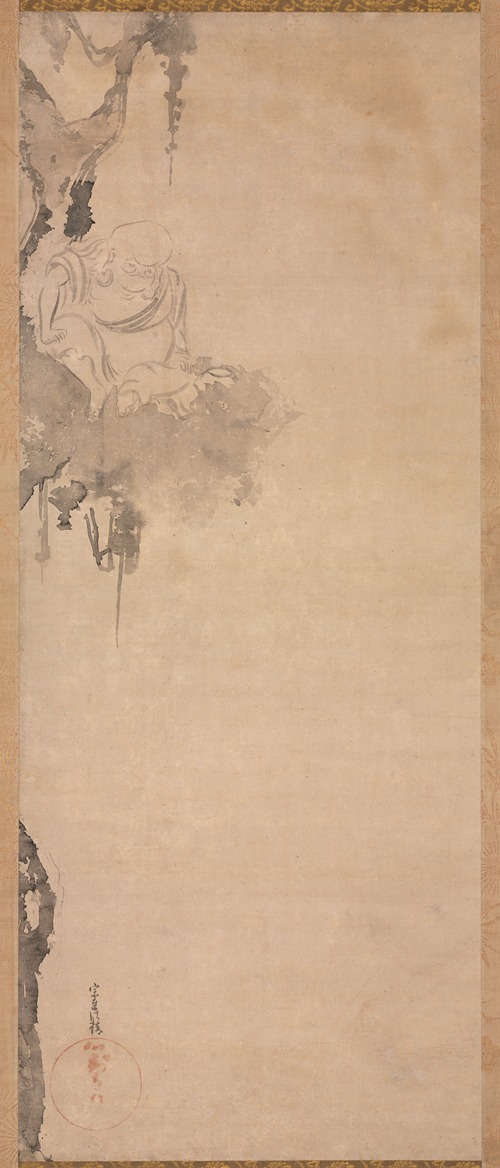
Tawaraya Sōtatsu was a Japanese furniture designer and painter of the Rinpa school.
Sōtatsu is best known for his decorations of calligraphic works by his partner Hon'ami Kōetsu (1558–1637), and his spectacular and highly influential byōbu folding screens, such as National Treasures Wind God and Thunder God and his painting of the Sekiya and Miotsukushi chapters from The Tale of Genji. He also popularized a technique called tarashikomi, in which a second layer of paint is applied before the first layer is dry.
He is also credited with co-founding the Rinpa school of Japanese painting, together with Kōetsu. Rinpa was not strictly a school, but a group of artist directly influenced by Sōtatsu and Kōetsu. Some of the most notable Rinpa artists are Ogata Kōrin (1658–1716), Ogata Kenzan (1663–1743) and Sakai Hōitsu (1761–1828). While not particularly known at the time he lived and painted, he is now the second-most recognized Japanese painter in terms of number of inclusions in the National Treasures of Japan list.
The exact date of Sōtatsu's birth, probably around 1570, remains unknown, and so does the place of his birth. The painter Tani Bunchō (1763–1841) stated that Sōtatsu was originally from Noto and that he studied under Sumiyoshi Jokei in Kyoto. His family name may have been Nonomura.
In 1602 he was hired by the Taira family to repair the 12th-century sutra scrolls Heike nōkyō at the Itsukushima shrine on Miyajima. This is the earliest paintings attributed to Sōtatsu, but it already features the characteristics of his later work. It is suspected that Kōetsu might have also worked in the repair of the scroll.
The first confirmed collaboration with Hon'ami Kōetsu (1558–1637) is in the Sagabon (Saga Books), an ambitious project started around 1606 by Suminokura Soan (1571–1632) to publish elaborate editions of classical Japanese book and Noh librettos. Sōtatsu created the designs for the covers and paper of many of the books, while Kōetsu was the calligrapher of some of the texts. The name Sagabon comes from the suburb of Kyoto where the book were produced.
Sōtatsu married a cousin of Koetsu. He also opened a shop in Kyoto, named Tawaraya, where he sold a variety of decorated objects, including fans, lantern paper, screens, dolls and patterns for kimono, and also took commissions for decorating interiors. The shop soon gained recognition for its artistic excellence.
The collaboration between Sōtatsu and Kōetsu came to an end around 1620, perhaps because he was moving away from the profession of decorator and designer, and started focusing more on his career as a painter.
He decorated the doors and screens of the Yōgen-in temple during the reconstruction ordered by Tokugawa Hidetada's wife in 1621, and in 1630 he was given the title of hokkyō ("Bridge of the Dharma"), the third highest rank awarded to Buddhist artists.
The circumstances of Sōtatsu's death are not known, but he probably died around 1640. The most successful among his direct students were Tawaraya Sōsetsu and Kitawaga Sōsetsu.


